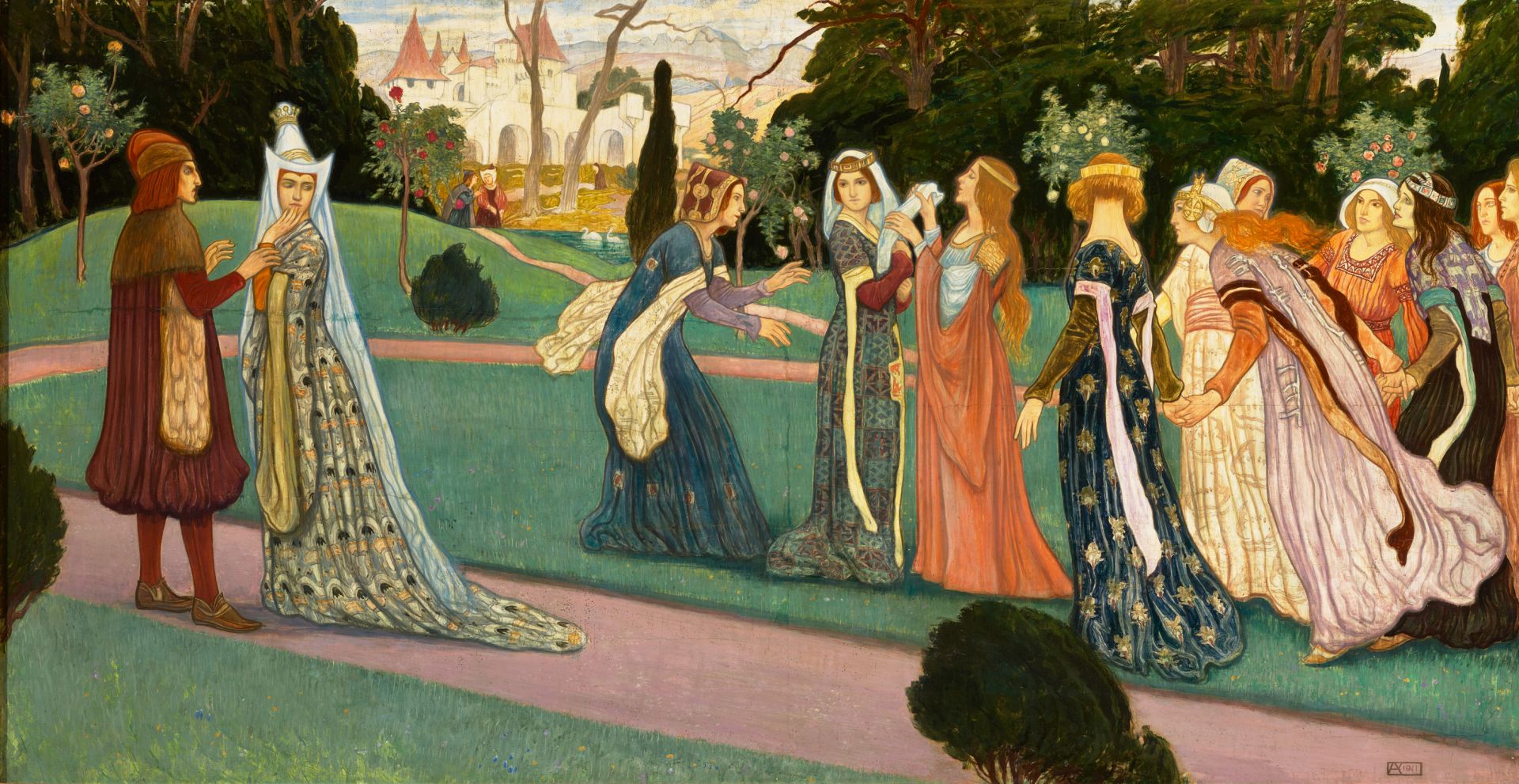Paradise in Heaven and on Earth
Klára Zách I
KÖRÖSFŐI-KRIESCH Aladár
Buda (Budapest), 1863 – Budapest, 1920
Klára Zách I, 1911
Aladár Körösfői-Kriesch – the founder of the Secessionist art colony in Gödöllő, whose objective was to devise a national Hungarian style – selected subjects for his paintings mostly from the legends of Hungarian history. The cult of the Middle Ages that was embraced by the artists of Gödöllő is reflected most clearly in the two large panel works relating the story of Klára Zách, which initiate the viewer into one of the most tragic events of four-teenth-century Hungarian history. Legend has it that Klára’s father, Felicián Zách, attacked the Angevin royal family to avenge the dishonour they had brought upon his daughter, and as punishment, the entire Zách family was put to death.
Conspiracy and seduction are embodied in the figures of the queen and her younger brother, Casimir (later Casimir the Great), who stand on the left of the painting; separate from them, in the graceful company of the ladies-in-waiting, we see the victim, a young girl, the incarnation of beauty and purity. Körösfői formulated his compositions for paintings and tapestries using the vernacular of the Secession (Hungarian art nouveau) blended with folk art motifs. The art historical precedent for the decorative profiles of the women in the group is taken from Botticelli’s Primavera.
